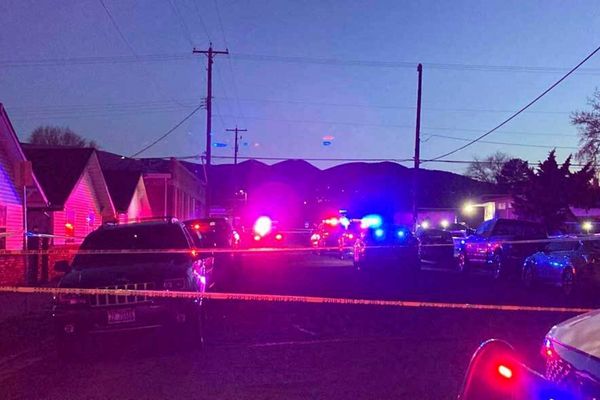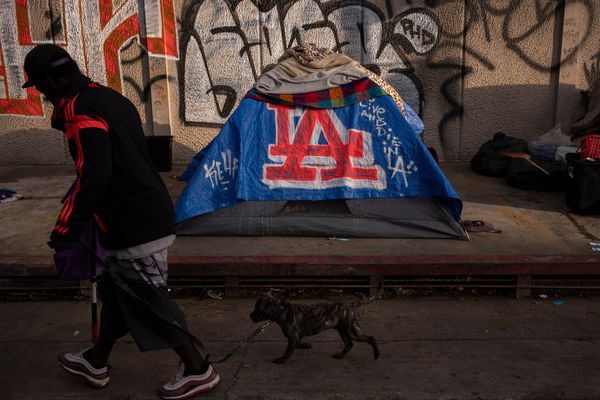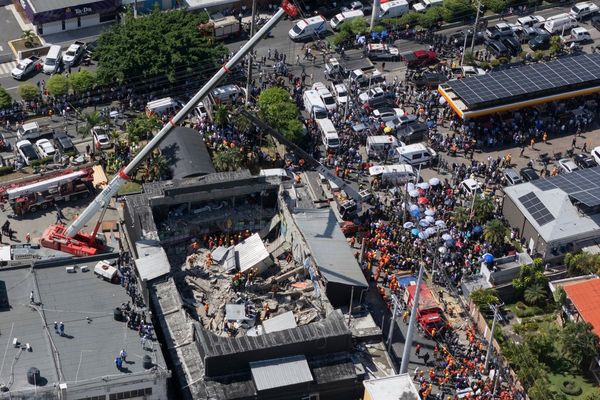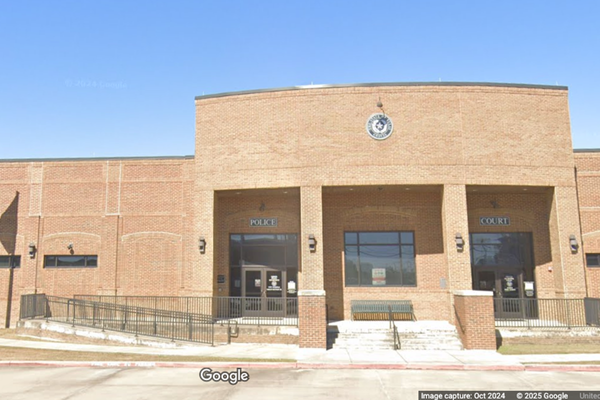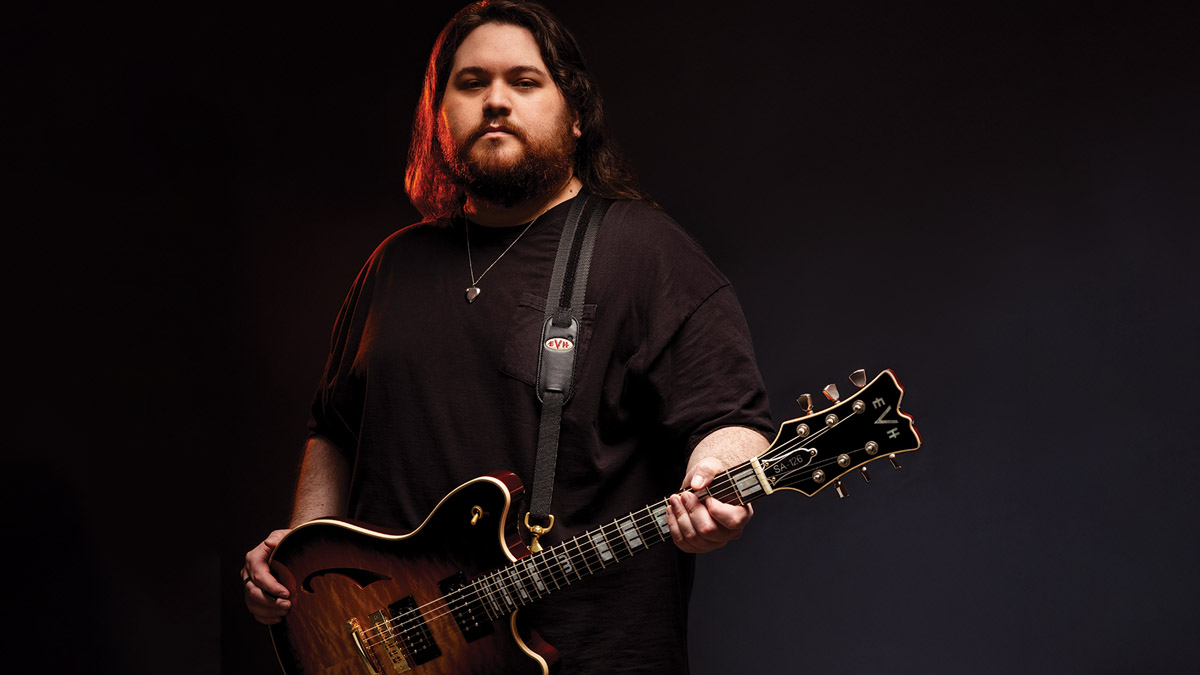
For Wolfgang Van Halen, 2023 was a huge year. He spent an enormous chunk of it on the road with his band, Mammoth WVH – opening for Metallica’s M72 stadium tour shows in the United States, Europe and Canada as well as the Alter Bridge Pawns & Kings tour and finishing the year with his band’s first tour as the sole headlining act.
Thanks to his guidance and vision, the EVH brand has continued to grow, with new releases like the Frankenstein series and MIJ Wolfgang Signature model, and he brought the revolutionary semi-acoustic electric SA-126 model to its final stages of completion. Somehow, he even found time to make the biggest commitment of his life by marrying his longtime girlfriend, Andraia Allsop, in October.
Another landmark event in a year filled with many of them was the release of Mammoth WVH’s sophomore effort, Mammoth II. Whereas the first Mammoth WVH album was recorded over a three-year period, Mammoth II was completed in less than half a year, with tracking starting in September 2022 and mixing completed in February 2023.
“Because of my touring commitments,” Wolfgang Van Halen says, “we only had a limited amount of time. I would prefer not to do that again. Arguably, we came out with a better record in a fraction of the time, so maybe that is the way to do it. I wanted to avoid the sophomore slump, so this album needed to be as good or better than the first one. I’m very OCD and a perfectionist, so I wouldn’t have released it if I wasn’t proud of it anyway.”
In truth, Mammoth II showcases a massive progression from Mammoth WVH’s debut album. The melodies are strong, dramatic and catchy; the production is expertly crafted with lush, sophisticated layers, epic cinematic soundscapes and hard-hitting punch; and the performances are skillfully and passionately executed, with Van Halen’s powerful drumming, numerous dazzling solos and notably improved and matured lead and harmony vocals standing out. Like before, Wolfgang performed everything himself, recording all of the instrumental and vocal parts.
Also like before, he relied on the phenomenal talents of producer Michael “Elvis” Baskette, who played a critical role as Wolfgang’s creative partner. A musical renaissance man with more than 25 years’ experience as a producer, engineer and mixer who, like Wolfgang, is also an extremely talented multi-instrumentalist, Baskette helped Van Halen craft a compelling sonic universe filled with a multitude of guitar textures and ear candy that surprises listeners with new discoveries after repeated playbacks.
Although Mammoth WVH is a solo act in the studio, on stage Wolfgang is accompanied by a highly capable “band of brothers”: guitarists Jon Jourdan and Frank Sidoris, bassist Ronnie Ficarro and drummer Garrett Whitlock.
On the headlining tour, which began in November, the band is performing a 90-minute set featuring 14 to 17 songs, depending on that night’s setlist. “I hope people dig the new album because we’re going to play most of, if not all of it, across the different sets that we have planned,” Van Halen says. “It’s so much fun to play the new songs with the band.”
In the following interview, Wolfgang Van Halen shares the details of the creation of Mammoth II.
How does your songwriting process for Mammoth II start?
“Usually it starts on guitar. A lot of my ideas stem from just me and an acoustic guitar – a Takamine that you can hear at the end of Waiting. I like to make quick minute-long demos of whatever ideas I have but without any structure.
“There are some idea showcases where I put every variant of the idea I have back-to-back, like eight bars of each. Then I’ll get with Elvis [Baskette, producer] and he’ll be like, ‘This one is good. Keep working on that. Let’s explore this.’
“From there I finish everything up and we get to work. I record my demos using Logic and keep them as bare and bold as possible, especially the drums. When I go into the studio I’ll flair it up and add personality to the drums and allow it to be a sort of spontaneous, in-the-studio writing process.”
You upgraded 5150 before you recorded the album and replaced the old SSL mixing board with a Neve. Why did you choose the Neve?
“I think the results speak for themselves. Sonically there is a big difference between this album and the last one, and part of that is because this one was done completely in 5150 from start to finish. The first album was recorded over a three-year period in three different studios. This album sounds more cohesive because all of the tracks were recorded in the same place, and you can hear that.
“With Elvis driving the board it was really magical. We were recording to tape, and I also got a Ludwig 45th Anniversary Vistalite Pro Beat green sparkle drum kit that sounds amazing. It’s the one I’m playing in the Don’t Back Down video. It was kind of unfair how much we had on our side in terms of sonic awesomeness. I’m very proud of it.”
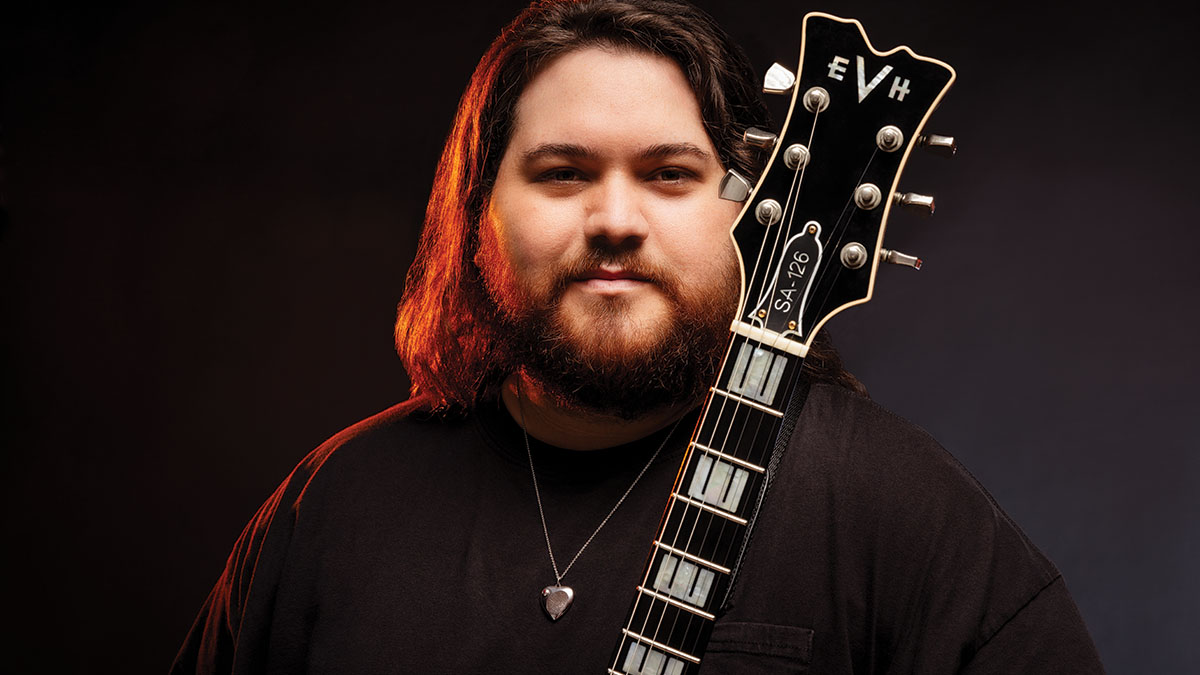
The Neve is a great-sounding board for recording drums and guitars. Did that influence your decision?
“It did, but really anything compared to the last board that we had in there, which was barely working, would have been an upgrade. The Neve was such a wonderful board that was within my budget, and it was a no-brainer to get it, considering it’s half the size of the SSL yet has twice as many channels.
“It’s also not a power suck like the other board, which would get so hot that we’d have to keep the air conditioning on all the time so it wouldn’t fucking melt, and that would get noisy. The power supply is much more efficient so we’re saving a lot of money with the Neve in the studio because it doesn’t run as hot or hard. It’s whisper quiet. What an upgrade!”
You’ve developed a great working partnership with Elvis. What does he contribute to your projects?
“People don’t realize the importance of Elvis in this process. I truly think that if I never said that I’m playing everything on the albums, people never would have known.
“But because I did, a lot of negative haters used that as a basis to criticize me after the first album came out, which was a big surprise. They would say things like, ‘He’s got no natural back and forth in the studio, that means it’s really uninspired material, blah, blah.’ If people didn’t know that I was playing everything, they wouldn’t say that.
You put me, Elvis, Jef and their assistant Josh Saldate in the studio and you get a Mammoth album. I need all of them
“At the same time, they fail to realize that Elvis and I literally are doing that back and forth in the studio. He is the other half of that creative bounce. When I’m stuck on something or if I’m on the right track, he helps me either keep digging or go somewhere else. He really is that friction that is needed to complete the creative process.
“He is absolutely integral to the process, and so is his engineer Jef Moll. You put me, Elvis, Jef and their assistant Josh Saldate in the studio and you get a Mammoth album. I need all of them. Then we have Matt Bruck there as well and my uncle Patrick [Bertinelli] to document everything, and it’s a pretty easy process.”
Does Elvis help with the song arrangements?
“Definitely. He’d be like, ‘This part needs to go here. This part needs to go there. You need to make this and that happen.’ He really pushes me, but there’s no animosity. If he tells me something isn’t good enough, I know that it’s always for the betterment of the song.
“I’ve worked enough with other songwriters to know that some people like to go, 'Hey, let’s do this and do that,' because they want to say that that’s the part that they wrote. They don’t want to collaborate to make the best of it. With Elvis and me, it’s really for the betterment of the song.”
Can you give me an example of where he’s improved one of the songs on the new record?
“He helped push the melody out of me for Better Than You. I wasn’t sure where I was going, and our collaboration brought out that sort of dichotomy that I really love in the song, which is the sing-songy Beatles-style melodic quality juxtaposed with the Meshuggah-influenced sludgy heaviness of the main riff.”
How does your recording process start in the studio? Since you’re one guy performing all of the instrumental and vocal parts, do you have everything mapped out in advance?
“I have my RFJ Logic demos, which means Ready For Jef, that I send to Jef and he preps them for Pro Tools. Then we sync the tape machines and Pro Tools, and then we start tracking drums. Instead of recording separate sections, like doing the intro, then the verse and then the chorus and piecing everything together, we’ll record as much of the entire song as I can do until I fuck up, which is usually about half of the song.
“They’re a lot of big, long takes, so it’s like full performances. The drum tracks are usually done in three big chunks for the whole song. We put together performances rather than stitching together smaller individual parts.
That story has been so telephone-gamed through so many random pull quotes that people now think my other uncle, Alex [Van Halen], played the solo!
“From there, we move on to bass. That went very quickly. My uncle Pat usually hangs out the whole time at the studio, but when I started recording bass tracks he had to go home for two days. When he came back, I was already done with the bass.
“Then we get into guitar, which is really fun. The bulk of the work is devoted to recording rhythm guitar tracks. From there, we split duty between recording vocals, guitar solos and overdubs. I was writing everything as we were doing it, so usually I’d wake up, record or write melodies for the vocals and lyrics and pull my hair out over that.”
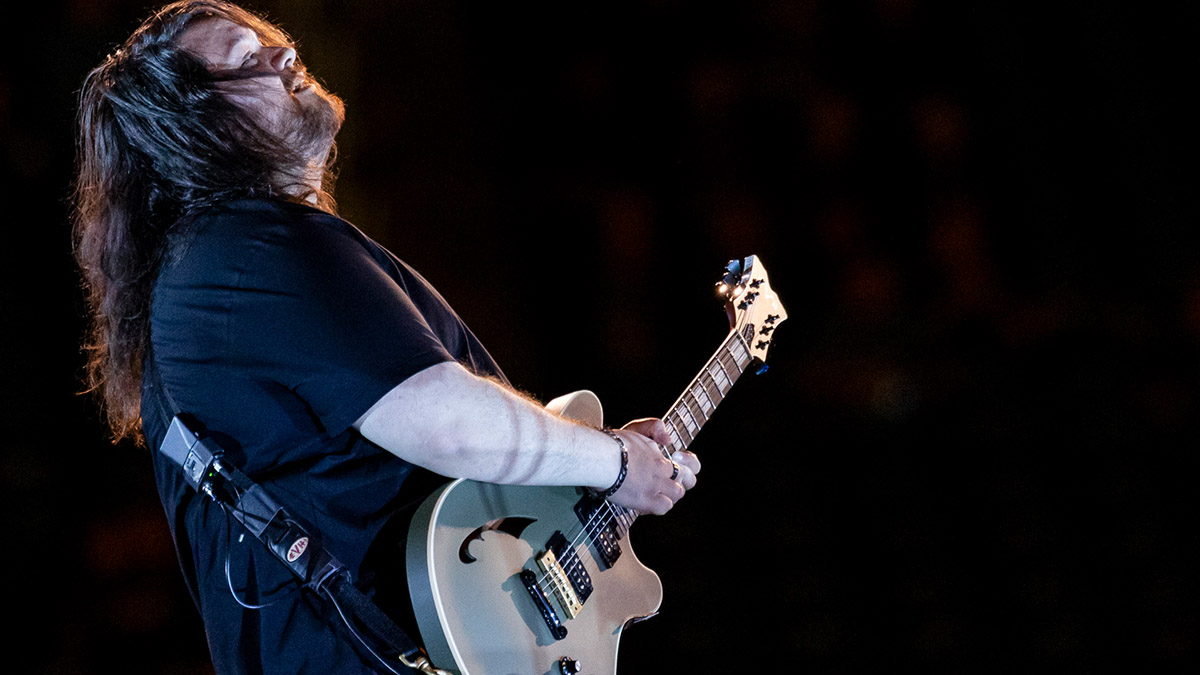
“When I’m writing lyrics I have to go to a different mental place and get out of being the usual me. And that’s not always a really fun place to go to, but we got it done. Then we hop back and forth between recording vocals and solos. If I sing really hard one day I’ll record solos the next day to let my voice recover.
“Recording solos was tough. I had a lot of ideas this time around that I felt like were good spots for solos, and there are more solos on this album compared to the first one. I put more stress on myself, trying to figure out where to go. Luckily throughout the process it just came to me and we figured it out.
The only solo that I was really worried about was the one on Another Celebration at the End of the World. I didn’t come up with anything until we got in the studio... I knew I wanted a repeated, rhythmic tapping thing that goes through the stabs, but I didn’t know what notes to do or how I was going to do it
“The only solo that I was really worried about was the one on Another Celebration at the End of the World. I didn’t come up with anything until we got in the studio and we were like, let’s just try something. I knew I wanted a repeated, rhythmic tapping thing that goes through the stabs, but I didn’t know what notes to do or how I was going to do it. Basically every solo was just a little bit of fucking around until we found the right path to go to.
“That’s how the solo for I’m Alright came around. I wanted to do an ’80s wah solo, but I got so tired of operating the wah that I had Uncle Pat do it. That story has been so telephone gamed through so many random pull quotes that people now think that my other uncle, Alex [Van Halen], played the fucking solo.
“The amount of clickbait that people got out of a completely wrong version of that story during that week was just so fucking dumb. As a joke, I included Pat in the credits on the back of the album. I thought it’d be really funny: ‘Wah operation on I’m Alright solo by Patrick ‘Uncle Pat’ Bertinelli.’
“When I added that, it actually held back the album cover design by a day because they had to wait until Pat signed a work-for-hire contract. We paid Pat $1 so we could legally have that there, which was amazing. They just updated Apple Music to show credits, and you can see it says, ‘Guitar Technician Patrick Bertinelli.’”
Was the Ludwig your primary kit?
“That was the only kit, but we used a different snare for every song. We were in the storage locker picking up stuff for recording, and I asked Al if it would be cool if I borrowed a couple of his snares.
“He was like, ‘Sure!’ so I ended up using a different snare for every song. I can’t remember the exact ones that we used. I’m Alright has a big washy, ’80s-esque, almost Def Leppard kind of snare, and I went with tighter sounding snares on songs like Right? and Optimist. It was really fun to go through the selection process.”
We have this Ampeg B-100R combo that I like to use. We mic the back of it as well as the front. For some reason, Dad figured out that when we mic the back of it, it gets this rumbly, low quality that miking the front doesn’t produce
It sounds like you took a similar approach with the guitar solos. Each solo has its own sonic personality.
“The biggest part of that was the sunburst SA-126, which was the third prototype of that model. That is basically all the guitar on the album. It was such a monumentally important guitar to the whole process. You can really hear the tones and how different it is and how dynamic it is, from the heavy, chuggy stuff to the clean tones at the beginning of Take a Bow.
“It’s such a versatile guitar. This album is an incredible showcase for what the SA-126 is capable of.”
How was your bass rig set up? Did you mic an amp, record direct or do both?
“We have this Ampeg B-100R combo that I like to use. We mic the back of it as well as the front. For some reason, Dad figured out that when we mic the back of it, it gets this rumbly, low quality that miking the front doesn’t produce. Elvis was so surprised when we did that on the last album. He was like, 'Wow! Holy shit! It really works!' It really adds to the overall bass tone.
“For the first album, I didn’t want to use the same basses that I played with Van Halen, so I played a Music Man StingRay on every song. This time around I used the Music Man for half of the songs. I also used my blue striped Frankenstein bass, which I like to call the Wolfenstein.
“That was the first bass I recorded with on the album, which I played on Another Celebration. That was it, other than a song that didn’t make the cut yet where I used a five-string tuned to drop A just to get that low note. I’m excited about working more on that song, so it’ll probably show up on the next album.”
What was your main guitar amp?
“It was the EVH 5150 III 50-watt 6L6 that I used for the Taylor Hawkins Tribute show at Wembley Stadium. I ended up using it for both of the tribute shows – we did the second show at the L.A. Forum in the middle of recording. I named the 50-watt head Noel and the cabinet is Liam.”
Because they always fight?
“Because I played them at Wembley and because Oasis played there. It’s a British connection. And the cabinet makes the noise. [Laughs] That amp/cabinet and the SA-126 were the winning combo on this album. That’s also what I have with me on tour all the time, which is why we sound so good.”
What’s special about that amp? Did (EVH amp designer) James Brown do a little extra magic on it?
“It’s straight up bone stock with no mods. Anybody can buy the stock amp at a store and get that same thing that we had. It’s attainable. I call it ‘special’ because I used it at those tribute shows, and in the studio there’s a certain something special about the way it sounds and records. It just seems right, and it matches everything well.”
How about effects – pedals, rack processors, outboard, plugins?
“When it comes to effects, it was pretty much whatever Elvis suggested. He’d go, ‘Hey, let’s try this.’ There were so many moments like that throughout recording. Elvis would plug in random guitar pedals and work them in, and there were so many layers of stuff that it got to the point where I don’t even know half the shit that we were using. I know we used a Uni-Vibe pedal. I had all of my usual EVH pedals, like the phaser, flanger and wah.
When it comes to my music, there are rarely any parts that need a specific effect. My pedalboard on stage is there for whenever I feel like adding something, not something that I need to do
“When it comes to my music, there are rarely any parts that need a specific effect. My pedalboard on stage is there for whenever I feel like adding something, not something that I need to do, although occasionally I may need a delay for something like the Distance solo. But every solo is just bumping up to the red channel and doing whatever hits me at the time.
“We definitely had a lot more fun this time around with effects. I let Elvis go nuts and we’d keep going until we found something that sounds cool. You can really hear that throughout the whole album because there are so many layers. I think you hear something new every time you listen to it. On the choruses for Take a Bow there are three different guitar tracks playing the low riff and each one has a different effect, like a flanger on one and a phaser on the other.”
You used your dad’s classic Frankenstein guitar and his number-one Marshall amp to record the Take a Bow solo. What inspired that?
“When I started making the album I thought it would be fun to use a different guitar of his for every solo. But then it turned into, 'Let’s just boil it down to one moment that feels really special.' When I first wrote the solo section for Take a Bow, it started as a looped section of the main riff. As I was recording the solo I sat there for three or four hours and came up with all these fun parts.
When I started making the album I thought it would be fun to use a different guitar of his for every solo. But then it turned into, 'Let’s just boil it down to one moment that feels really special'
“The solo section got longer and longer, which made the whole song longer. It felt like such a special moment that I didn’t want to change it. So that’s where that whole buildup comes from. And it felt like such a departure, or really an elevation from anything I’ve done before.
“It felt like a really special moment to celebrate by using the Frankenstein and the original Marshall through one of Dad’s OG Marshall cabs from the club days at the same time. It was really cool to be able to have that special moment in my career, songwriting and guitar playing marked by something so important. It was like having my dad right there with me.”
Did you use a Variac?
“Yes, we did. That’s the authentic secret to that whole combo.”
Miles Above Me has a lot of thick midrange guitar tones, especially on the solo.
“One of my favorite stories about the tracking of that song is the intro of it. You can hear when Elvis unmutes the second guitar track that comes in because the feedback hits right away and the guitar screams.
“The guitar was feeding back uncontrollably the entire time before I started playing, but you only really hear it at the very beginning after he unmutes the track. That was one of my favorite moments because the guitar was just screaming and you could hear it in between every take.”
The guitar and bass tones on Optimist are really heavy, especially on the middle section about two and half minutes into the song.
“Again, that was the SA-126. That guitar is just fucking stupid-versatile.”
When is the SA-126 coming out?
“We will be able to talk more about that next year when everyone will be able to get their hands on it, finally. It’s taken a while, but that’s exactly what Dad did with the Wolfgang, road-testing and crash-testing it. It just gets better with each revision we’ve made as we’ve gone along.
“I’m really excited for people to finally get it in their hands. It’s such a rare thing and such a wonderful opportunity to be able to design a brand-new instrument that’s ideal for what I’m doing. But it’s capable of so much more. I can’t wait to hear what other people use it for. I’ve had such a wonderful time with Matt (Bruck) and Chip (Ellis) designing it. It’s just a dream.”
How did you create that dissonant electric guitar sound heard at the end of Erase Me?
“There’s this one harmonic that’s right around the third or fourth fret. That’s just that harmonic played on every string at once with the phaser pinned up all the way going nuts. You can hear the effect start to wane because I turned the phaser down a little bit as it lets go.”
While you were recording you posted a photo of your dad’s white 1962 (Les Paul) SG TV – the guitar with horn that he sawed off when recording Dirty Movies. Where do you use that guitar?
“I call it the 'Les G.' I used it on Like a Pastime for the melody on top when the song comes in, and also for the harmony to the rhythm part. The low part is the SA-126. I also used it for that melodic, almost retro ’80s line.”
What effects did you use on the intro?
“We used the EVH flanger and phaser and a straight-from-the-amp sound and blended the three together. It ended up not being as washy and effected as I thought it was going to be.”
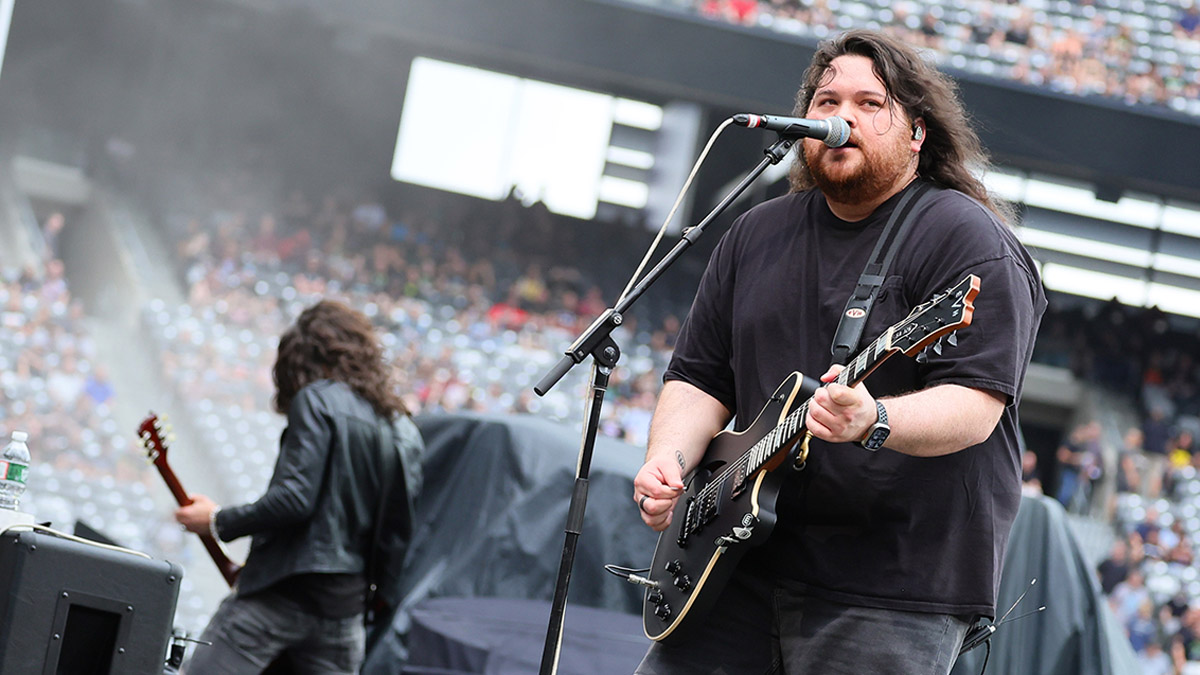
Did you use any other guitars on the record?
“I used one of Matt’s Teles for a demo, but that idea never got fleshed out fully. But other than that, no. It’s kind of crazy how much that one sunburst SA-126 is the backbone of the entire album. From the clean intro to the djent parts of Take a Bow that’s all the same guitar.
“The SA-126 is way beyond a typical semi-hollow. There’s really nothing else like that guitar. It takes its inspiration from a classic design, but the way we put it together, the pickups, and pretty much everything else, make it a different sounding guitar. It’s like a hot rod, but with a souped-up modern engine. Nothing like this existed until we made it.”
What gauges do you prefer for your strings and picks?
I went through every single type and gauge of pick that Dunlop makes. I was like, ‘What if there’s a different pick out there that’s perfect for me?’ It turns out there wasn’t
“My picks are Dunlop Max-Grip .60mm nylon. I used them on the 2012 and 2015 Van Halen tours, but a while back I went through every single type and gauge of pick that Dunlop makes. I was like, ‘What if there’s a different pick out there that’s perfect for me?’ It turns out there wasn’t, and I had been using the one I needed from the start.
“It was fun to get that confirmation. They’re very versatile. They’re capable for all of the fast passages in my soloing, but they’re equally great overall for strumming and power chords.
“I was using the same sets of 9-46 EVH guitar strings made by D’Addario for years, although in the studio we’ll change gauges depending on the tuning. But when I went over to play at Wembley, during the rehearsals I was so nervous that I was bending everything out of tune. I was in a room with Justin [Hawkins], Josh [Freese] and Dave [Grohl], and in between every little break I’d have to retune. It was horrible. I felt like I was wasting everyone’s time.
“We gauged up to a heavier set of 10-48 strings and it worked. Before then all my guitars had .009s because that’s what Dad used. But the .010s have been very helpful in terms of maintaining tuning. I don’t need lower tension since I’m not using a Floyd or anything like that. You have to work a little harder, but it keeps everything in check.”
You’ve been touring with your band for more than two years. Do you plan on including them in the recording process, or are you going to continue working by yourself?
“It’s very possible, but currently I’m not sure if I’m ready to completely let go of the recording process. I have such a good time recording. It’s the only opportunity I get to play drums anymore. The core DNA, at least so far, of the Mammoth albums is that whole creative process between Elvis and me. But ask me three albums from now, and maybe I’ll be sick of it. I really don’t know. But for now I enjoy the process too much, selfishly, to give it up.
“I may just ease into it. I would absolutely love to collaborate with the guys in the band. Maybe the most realistic prospect is having an individual member appear on one song here or there, like maybe Frank does a solo on this or Jon is on that. Maybe their involvement will start to seep through over time instead of just making a full album right away. But that’s yet to be seen. We’ll just have to see what happens.”
- Mammoth II is out now via BMG.
